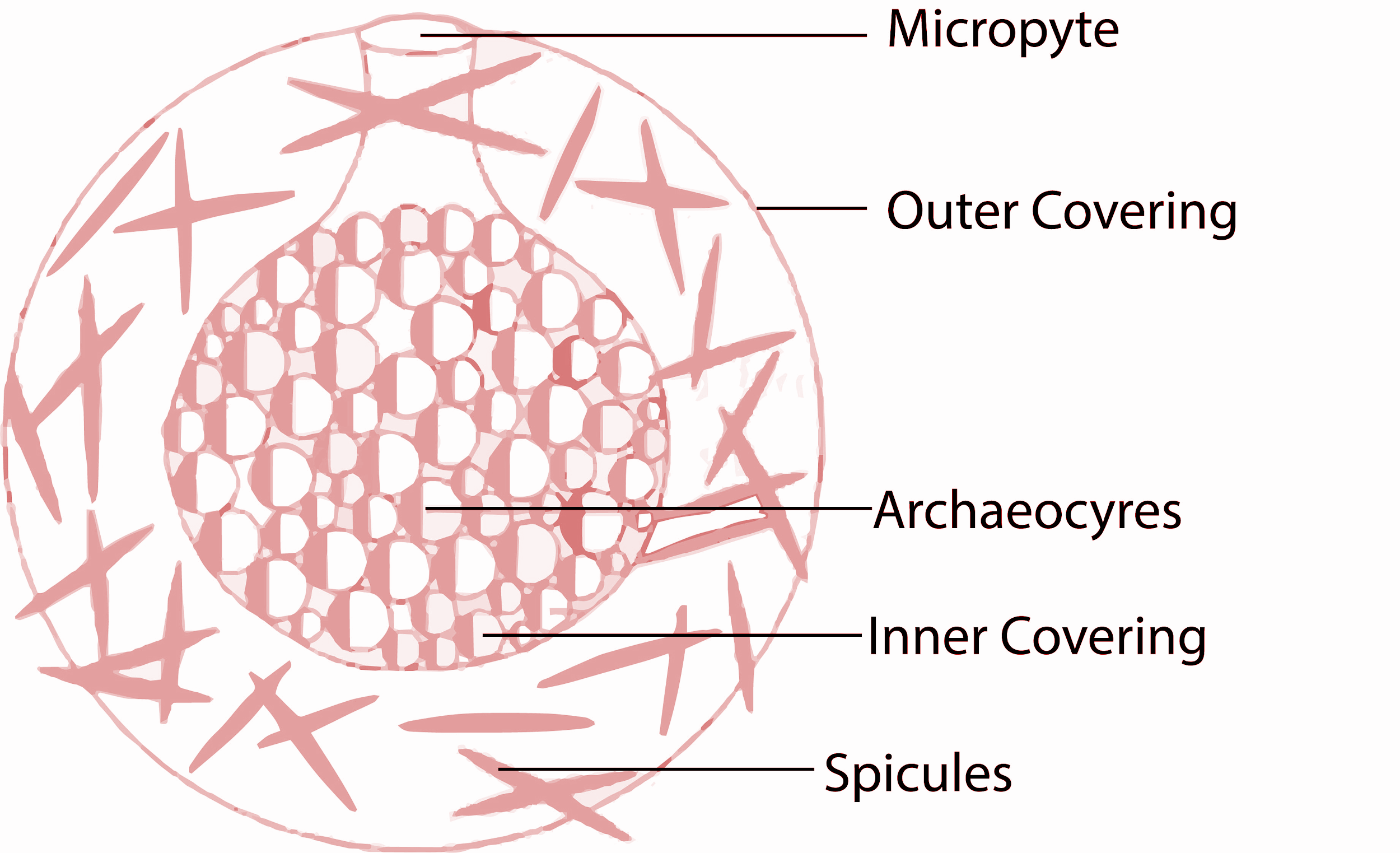
In sponges, the cells that can be converted into other types of cells are called as
(a) Phagocytes
(b) Archaeocytes
(c) Collencytes
(d) Trophocytes
Answer
492.9k+ views
Hint: Sponges are the members of the phylum Porifera. They are multicellular organisms and have unspecialized cells to transform into other types. The cells that can convert into other types of cells in an organism are called Totipotent cells.
Complete step by step answer:
In sponges, the cells that can be converted into other types of cells are called Archaeocytes. Archaeocytes are derived from Greek archaios “beginning” and kytos which means “hollow vessel”. They are the totipotent cells and have varied functions. These cells match that of stem cells because they contain high cytoplasmic contents which help cells to differentiate according to the function needed. Cellular division is a special function of archaeocyte. All specialized cells of these sponges originate from archaeocytes. Archaeocytes are important in reproduction in sponges as sexual reproductive cells are formed from them. Similarly, asexual reproductive cells are also formed from these cells and contain more amoebocytes.

So, the answer is, ‘Archaeocytes ‘.
Additional Information: - All sponges are aquatic and sessile and remain attached to underwater objects. - The minute pore in the body wall through which the water enters into the body is called Ostia. - The body wall of a sponge consists of layers viz pinacoderm, choanoderm, and mesohyl layer. - The Mesohyl layer contains amoebocytes of both pinacoderm and choanoderm. - Amoebocytes are modified into archaeocytes, trophocytes, spongioblast, schleroblasts, collencytes, phagocytes, etc.
Note: - Porifera is also known as pore bearers as their body wall possesses numerous tiny pores. - They are multicellular organisms but lack tissue- level organization. Thus, even though cells have some division of labor, they are unspecialized. - Archaeocytes along with collencytes and other structural elements are called spicules. - Archaeocytes are also known as amoebocytes or amoeboid cells. - Archaeocytes move within the walls of sponges with an amoeba- like movement while performing several functions.
Recently Updated Pages
Master Class 11 Economics: Engaging Questions & Answers for Success

Master Class 11 Business Studies: Engaging Questions & Answers for Success

Master Class 11 Accountancy: Engaging Questions & Answers for Success

Master Class 11 English: Engaging Questions & Answers for Success

Master Class 11 Computer Science: Engaging Questions & Answers for Success

Master Class 11 Maths: Engaging Questions & Answers for Success

Trending doubts
State and prove Bernoullis theorem class 11 physics CBSE

1 ton equals to A 100 kg B 1000 kg C 10 kg D 10000 class 11 physics CBSE

State the laws of reflection of light

One Metric ton is equal to kg A 10000 B 1000 C 100 class 11 physics CBSE

1 Quintal is equal to a 110 kg b 10 kg c 100kg d 1000 class 11 physics CBSE

Difference Between Prokaryotic Cells and Eukaryotic Cells




